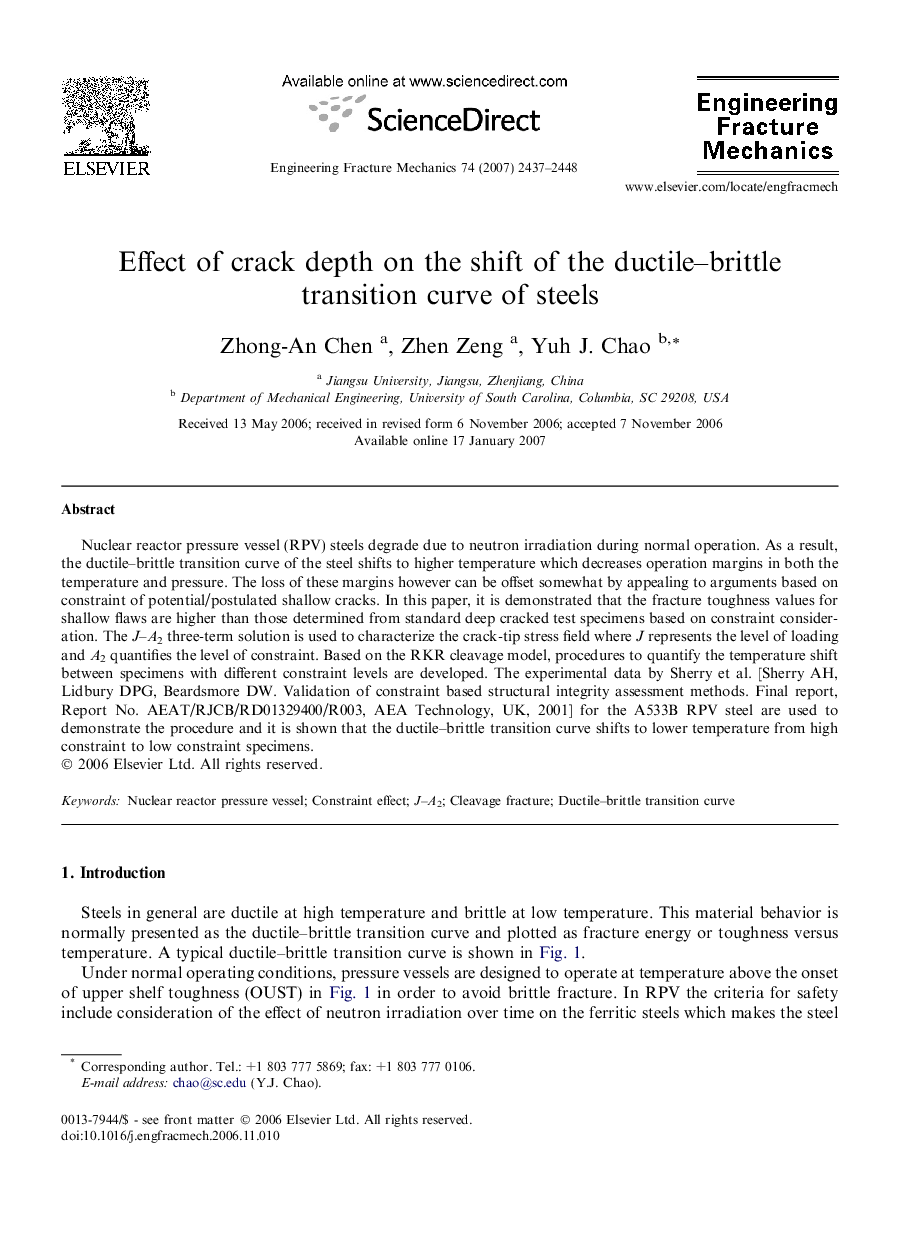| کد مقاله | کد نشریه | سال انتشار | مقاله انگلیسی | نسخه تمام متن |
|---|---|---|---|---|
| 768049 | 897279 | 2007 | 12 صفحه PDF | دانلود رایگان |

Nuclear reactor pressure vessel (RPV) steels degrade due to neutron irradiation during normal operation. As a result, the ductile–brittle transition curve of the steel shifts to higher temperature which decreases operation margins in both the temperature and pressure. The loss of these margins however can be offset somewhat by appealing to arguments based on constraint of potential/postulated shallow cracks. In this paper, it is demonstrated that the fracture toughness values for shallow flaws are higher than those determined from standard deep cracked test specimens based on constraint consideration. The J–A2 three-term solution is used to characterize the crack-tip stress field where J represents the level of loading and A2 quantifies the level of constraint. Based on the RKR cleavage model, procedures to quantify the temperature shift between specimens with different constraint levels are developed. The experimental data by Sherry et al. [Sherry AH, Lidbury DPG, Beardsmore DW. Validation of constraint based structural integrity assessment methods. Final report, Report No. AEAT/RJCB/RD01329400/R003, AEA Technology, UK, 2001] for the A533B RPV steel are used to demonstrate the procedure and it is shown that the ductile–brittle transition curve shifts to lower temperature from high constraint to low constraint specimens.
Journal: Engineering Fracture Mechanics - Volume 74, Issue 15, October 2007, Pages 2437–2448